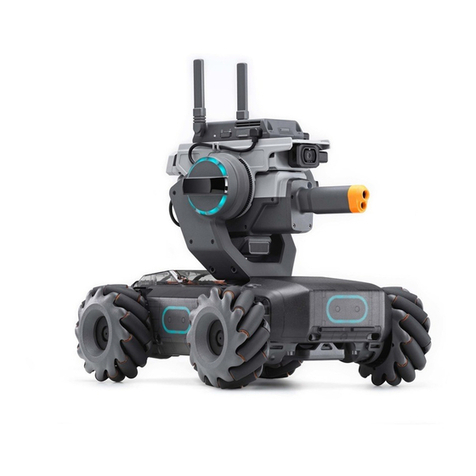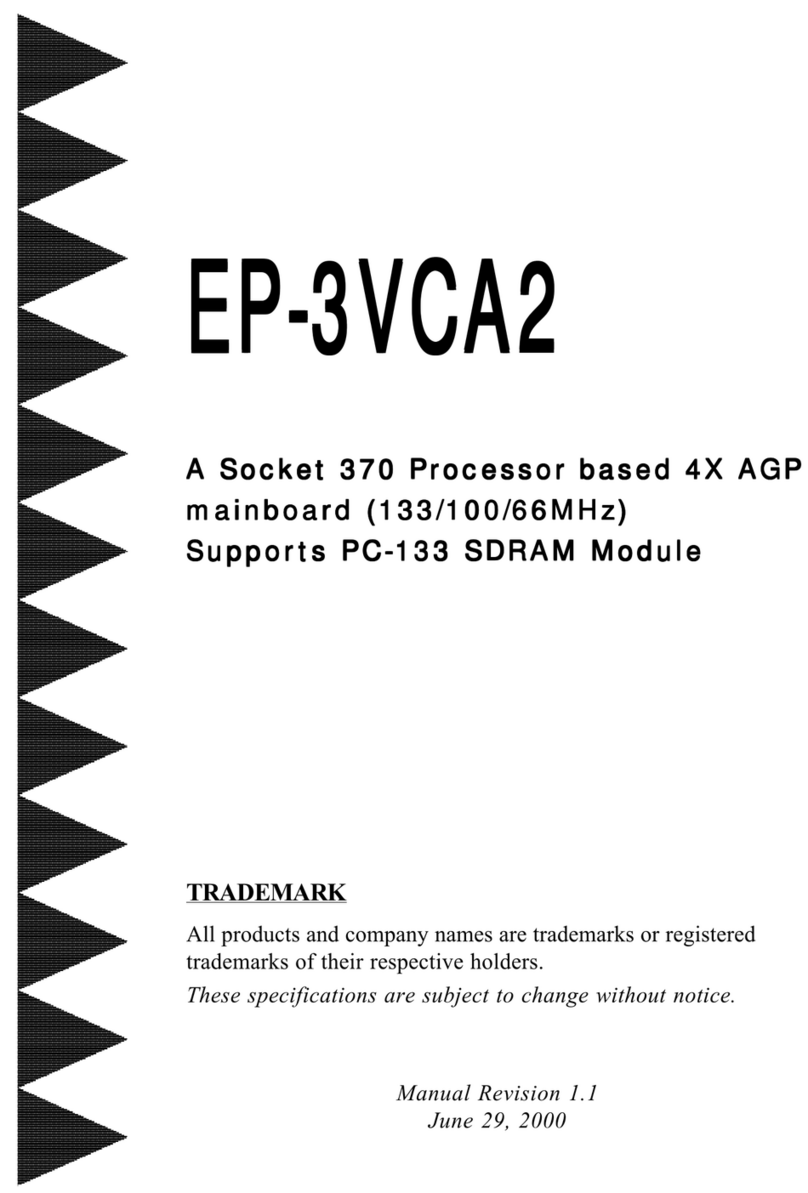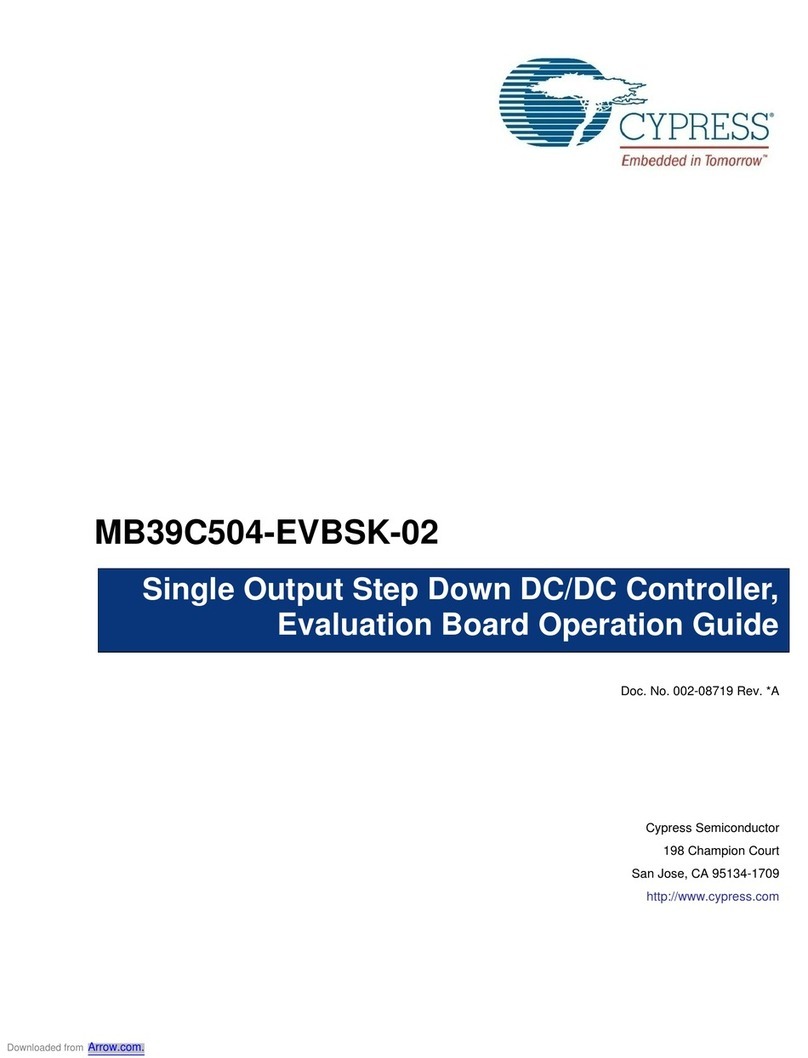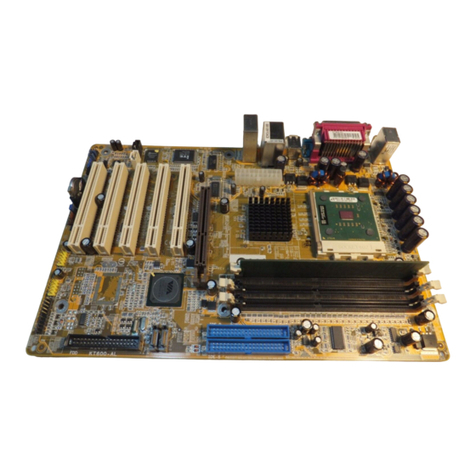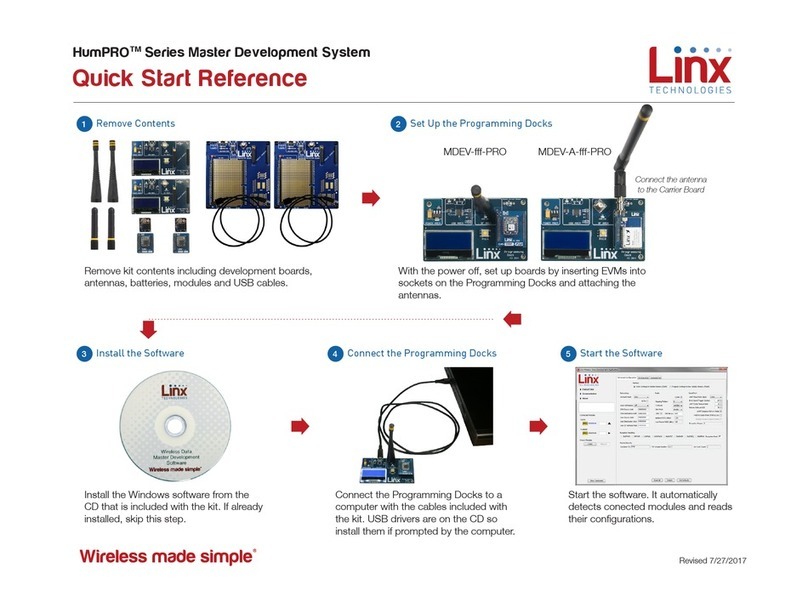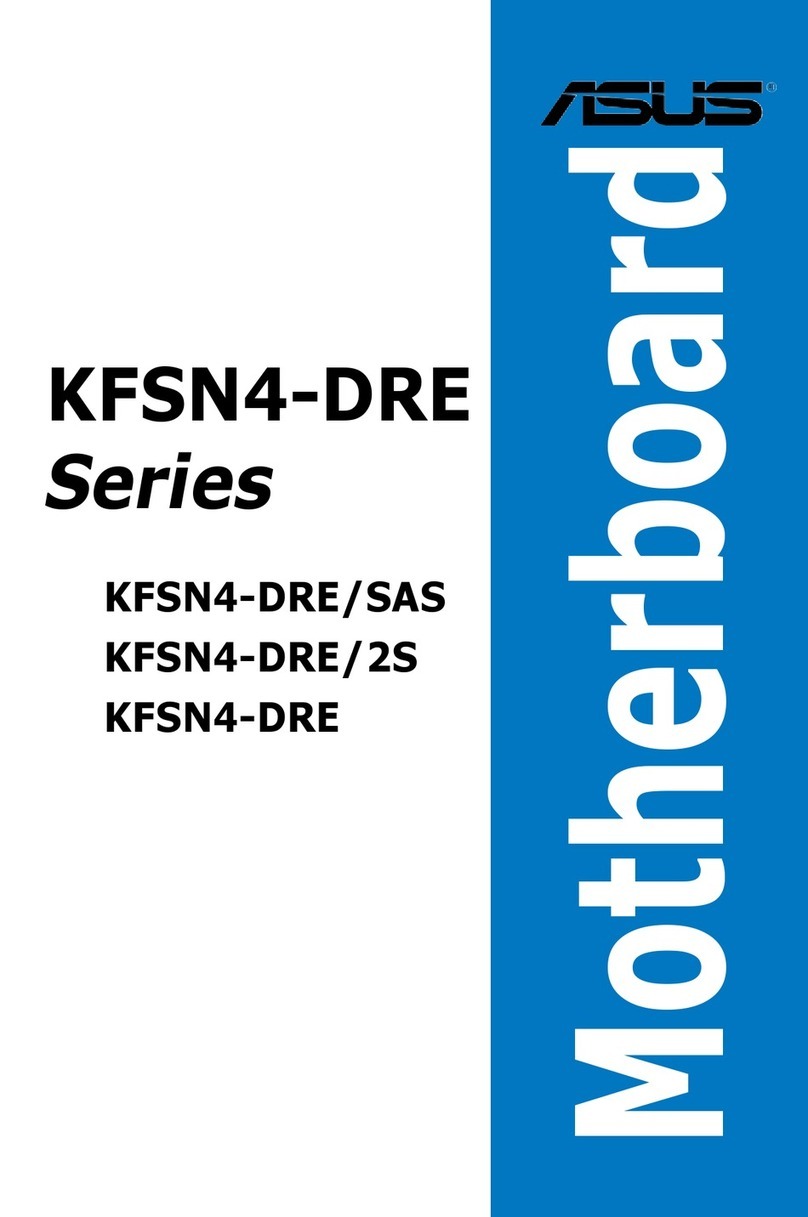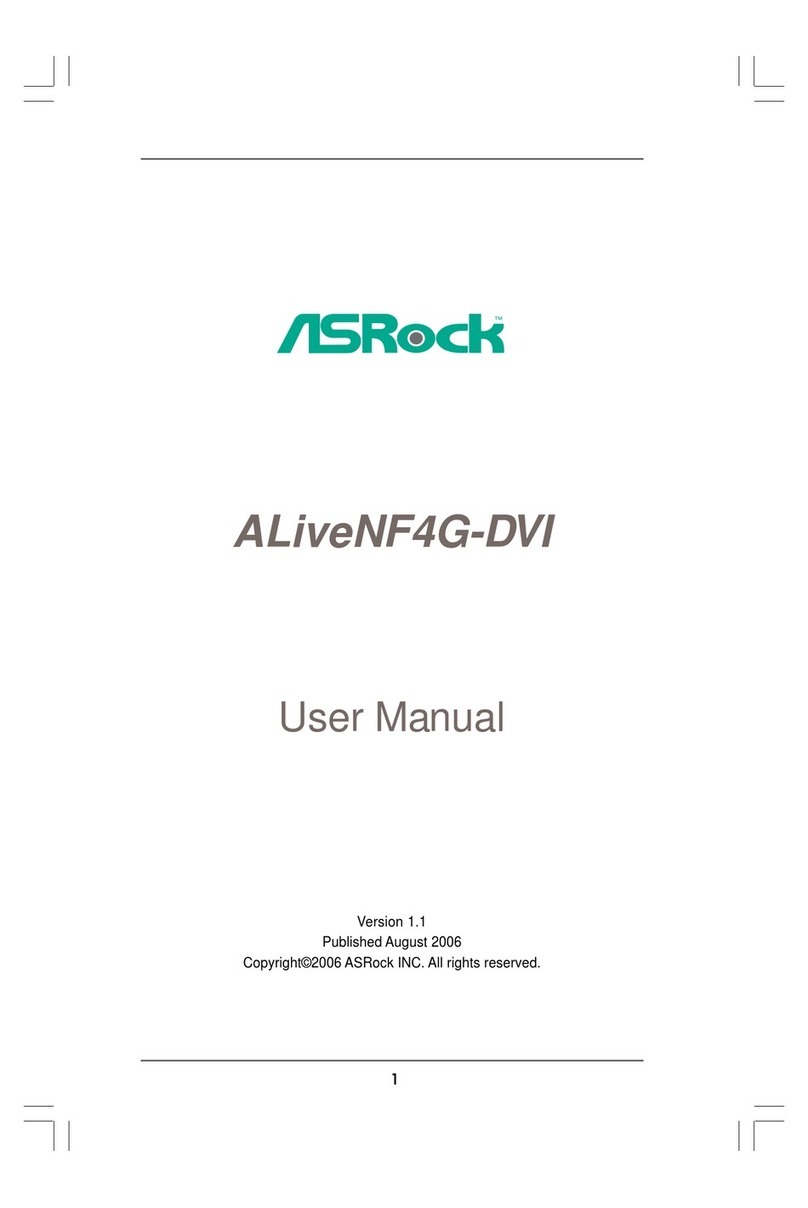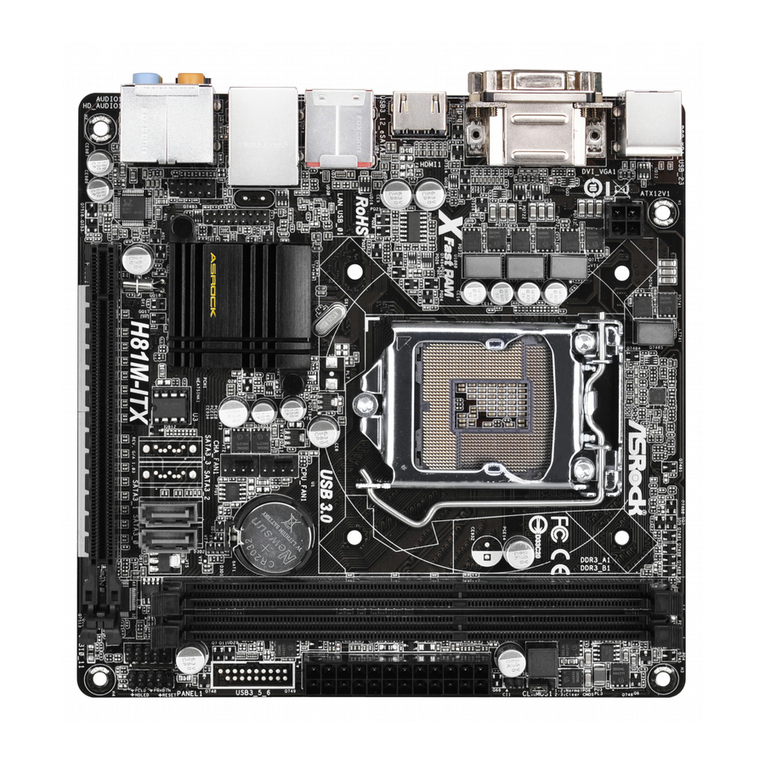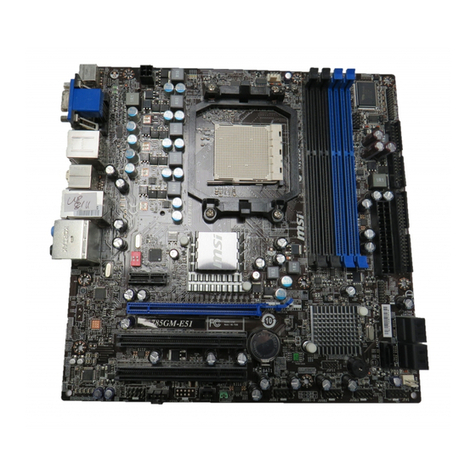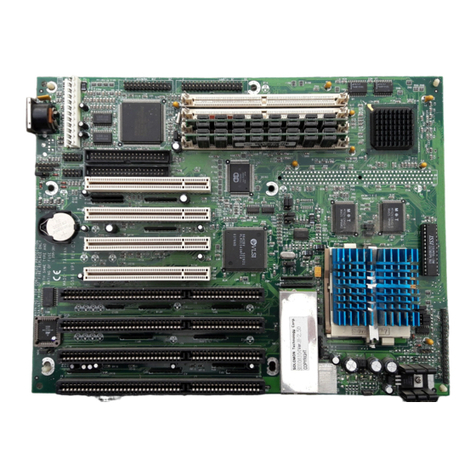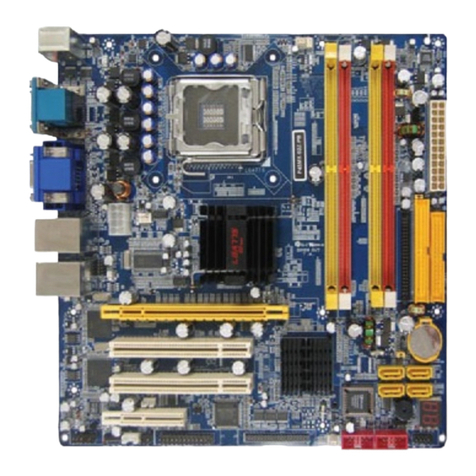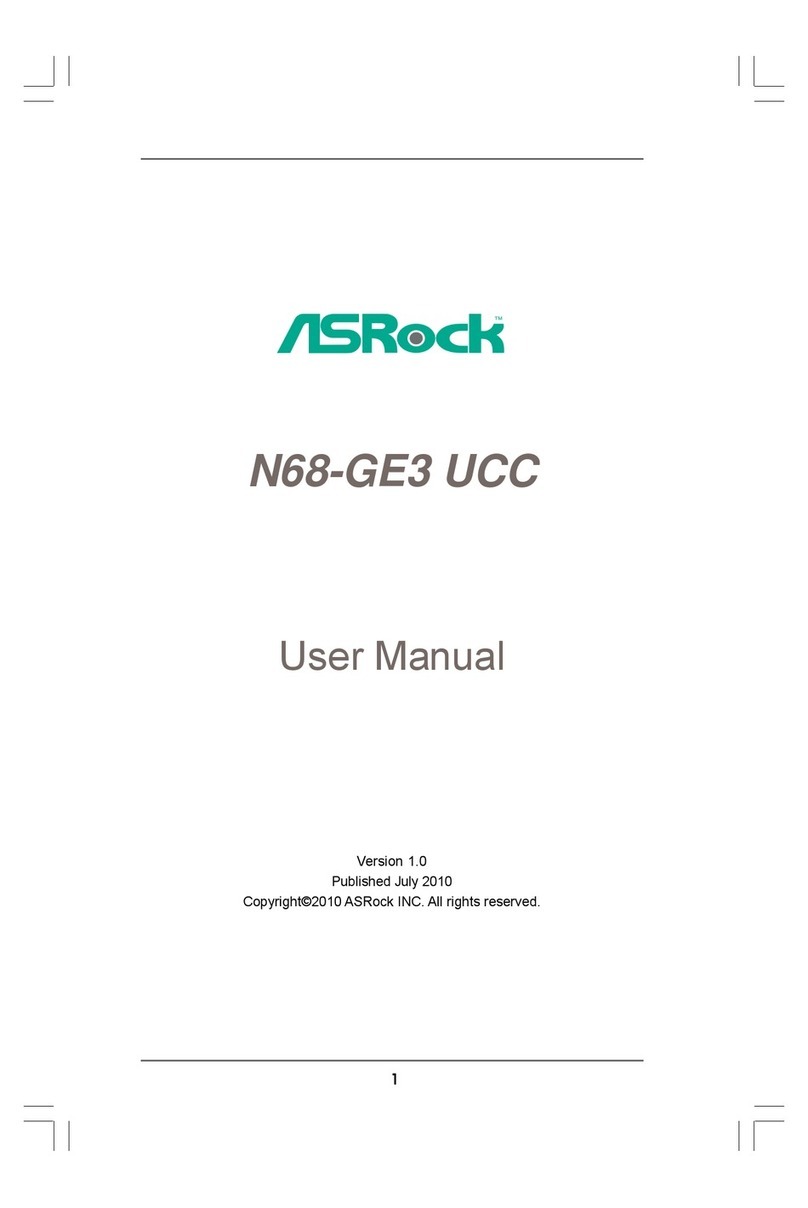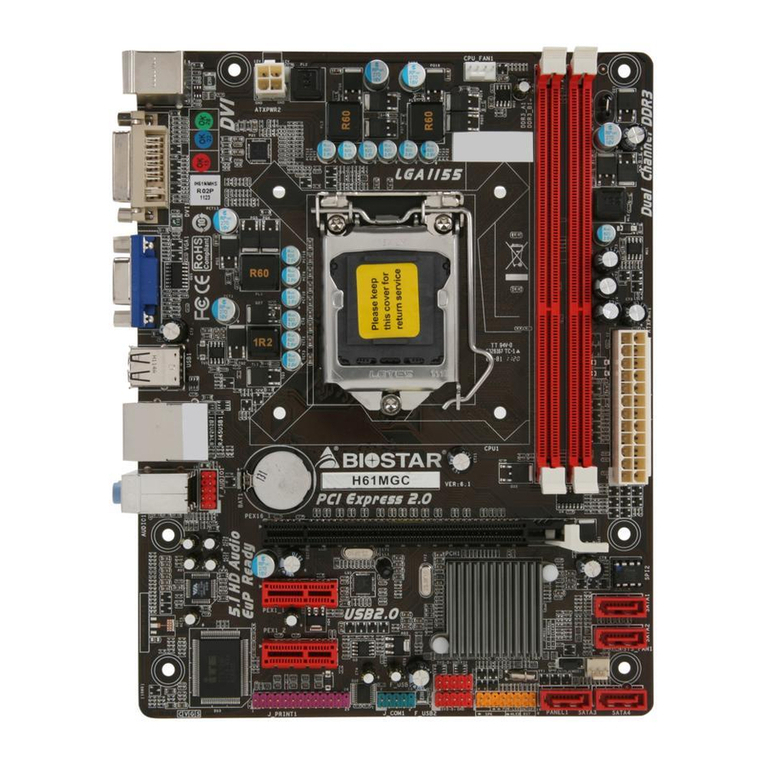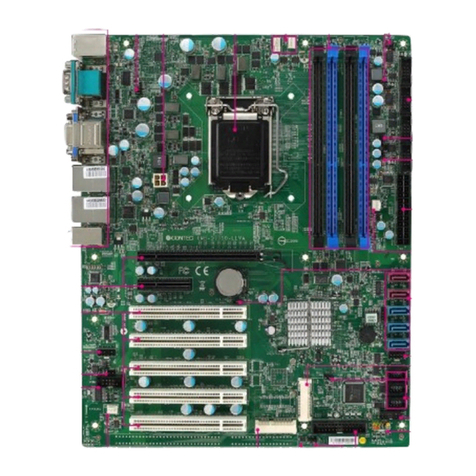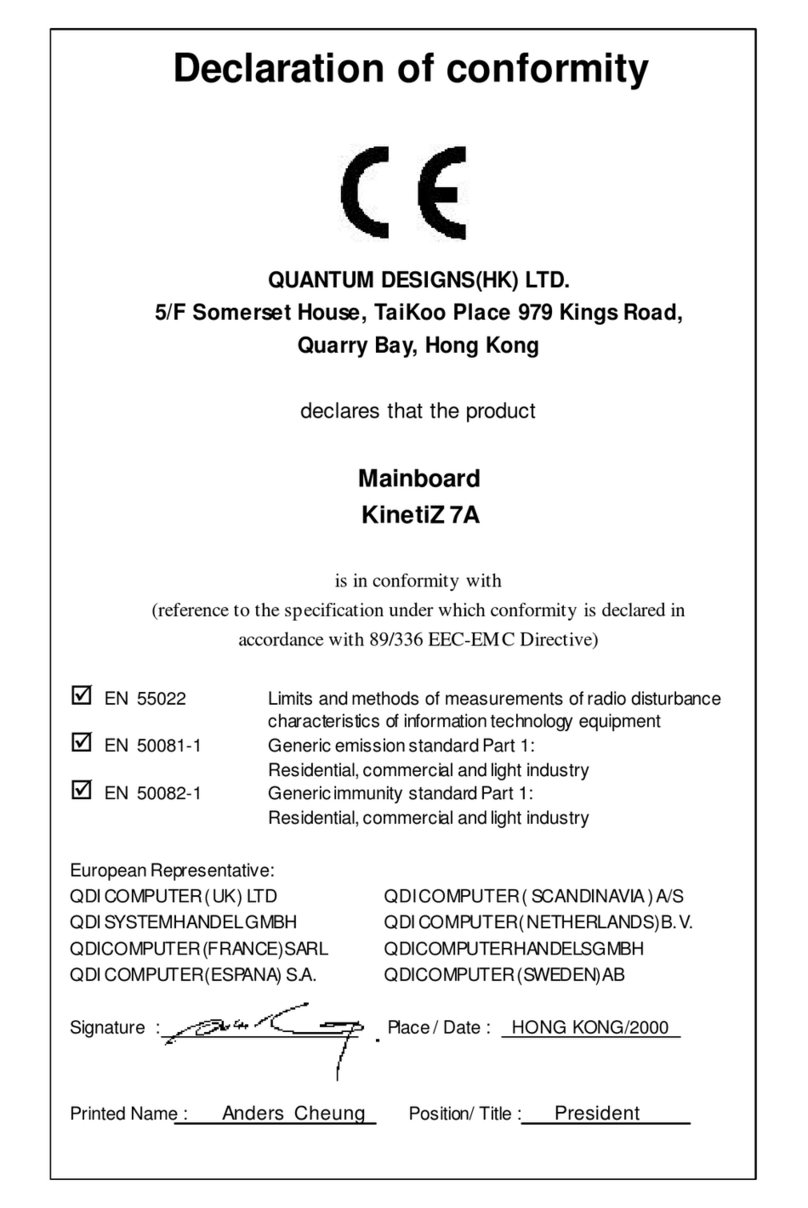dji ROBOMASTER User manual

v1.0
2020.01
Development Board Type C
User Manual

Searching for Keywords
Search for keywords such as “battery” and “install” to nd a topic. If you are using Adobe Acrobat
Reader to read this document, press Ctrl+F on Windows or Command+F on Mac to begin a
search.
Navigating to a Topic
View a complete list of topics in the table of contents. Click on a topic to navigate to that section.
Printing this Document
This document supports high resolution printing.

© 2020 DJI All Rights Reserved. 1
Content
Disclaimer 2
Warning 2
RoboMaster Development Board Type C 2
Introduction 2
In the Box 3
Overview 3
Development Board 3
SWD Cable 4
2-Pin CAN Cable 4
4-Pin CAN Cable 4
Mounting the Board Type C 4
Function Description 5
Power Supply 5
Input Protection Circuit 6
Customizable LED 6
5V Port 7
BOOT Conguration Port 7
Micro USB Port 8
SWD Port 9
Buttons 9
Customizable I/O Port 10
UART Ports 10
CAN Ports 11
PWM Ports 12
DBUS Port 13
Digital Camera FPC Port 14
Buzzer 14
Voltage Detection 15
6-Axis Inertial Measurement Unit (IMU) 15
Magnetometer 16
Usage 17
Specications 17
Appendix 17

2© 2020 DJI All Rights Reserved.
Disclaimer
Thank you for purchasing the ROBOMASTERTM Development Board Type C (hereinafter referred to
as “Board Type C”). Read this disclaimer carefully before using this product. By using this product,
you hereby agree to this disclaimer and signify that you have read it carefully. Install and use this
product in strict accordance with all related documents. Users bear the responsibilities in all the
consequences caused by using this product. DJITM will not bear any legal responsibilities for any
damages due to improper use, installation, or modication.
DJI and ROBOMASTER are trademarks of DJI and its affiliated companies. Names of products,
brands, etc., appearing in this document are trademarks or registered trademarks of their respective
owner companies. This product and document are copyrighted by DJI with all rights reserved. No
part of this product or document shall be reproduced in any form without the prior written consent or
authorization of DJI. The nal interpretation right of this disclaimer is reserved by DJI.
This document and all other collateral documents are subject to change at the sole discretion of DJI.
For up to date product information, visit http://www.robomaster.com and click on the product page for
this product.
Warning
1. Connect the cables correctly by following the instructions in this document. Otherwise, the cables
or the Board Type C may be seriously damaged.
2. Make sure there are no short-circuits and all the cables are in good condition. DO NOT use cables
that have been damaged in any way.
3. Make sure to use the product in strict accordance with the specications listed in this document,
including those related to voltage and temperature. Failure to do so may reduce the product
service life or even lead to permanent damage.
4. To avoid physical damage, make sure to assemble the Board Type C correctly.
5. If you detect any ames, smoke, strange smells, or other abnormalities, disconnect the Board Type
C from the power source immediately.
6. DO NOT open the silicone case. Otherwise, foreign objects may fall inside and the performance of
the Development Board Type C may be negatively affected.
RoboMaster Development Board Type C
Introduction
Designed to work with the products of RoboMaster and other accessories, the compact Development
Board Type C uses a high-performance STM32 microcontroller chip and supports a wide range of
voltage inputs. The highly integrable Board Type C boasts an expansion interface, communication
interface, and high precision IMU sensors and features an anti-reverse connection and anti-
overvoltage protection. The Board Type C provides rich routines and can be widely used in elds
such as robotics competitions, research and education, and automation equipment.

© 2020 DJI All Rights Reserved. 3
2-Pin Cable × 1
4-Pin Cable × 1
SWD Cable × 1
Power Cable × 1
Board Type C × 1
In the Box
Overview
Development Board
111212 131314
16
15
123 4 5 6 7
8
9
10
9
9
17
No. Name Interface Description
1Customizable LED Tri-color LED
25V Port 5V laser port
3RST Button Reset button for STM32
4Micro USB Port Port for USB communication or rmware download in DFU mode
5BOOT Conguration Port Conguration port of BOOT0 and BOOT1
6SWD Port Port for SWD downloader to download programs
7KEY Button Customizable button
824V Power Input Port Power input
924V Power Output Port Power output
10 Customizable I/O Port Port that can be congured as IIC and SPI ports
11 3-Pin UART Port 3-Pin UART port
12 CAN2 Port 4-Pin CAN port
13 CAN1 Port 2-Pin CAN port
14 4-Pin UART Port 4-Pin UART port
15 PWM Port PWM output port x 7
16 DBUS Port DBUS remote controller receiver port x 1
17 18-Pin Digital Camera
FPC Port FPC port for DCMI

ROBOMASTER Development Board Type C User Manual
4© 2020 DJI All Rights Reserved.
Cable length: 450 mm; A: Positive electrode (Red); B: Negative electrode (Black)
A
B
SWD Cable
2-Pin CAN Cable
Cable length: 350 mm; A: CANL (Black); B: CANH (Red)
Cable length: 100 mm; A: SWDIO (Black); B: SWCLK (Black); C: GND (Black); D: 3.3 V (Black)
4-Pin CAN Cable
Cable length: 350 mm; A: CANL (Grey); B: CANH (Grey); C: GND (Grey); D: 5 V (Red)
Mounting the Board Type C
Refer to the dimensions in the gure below when mounting the Board Type C.
AB
DC
A
B
AB
DC
4− 5.00 4− 2.50
60.00
36.00
Unit: mm
14.50
5.60
16.30
XT30 Power Cable

ROBOMASTER Development Board Type C User Manual
© 2020 DJI All Rights Reserved. 5
On the Board Type C there are four mounting holes, each with an inner diameter of 2.5 mm and an
outer diameter of 5 mm. The holes are used to help mount the board onto structural components. As
shown below, the ESC Center Board 2 can be used as an extension port for the Board Type C.
(Note: Screws and copper pillars are not included.) Unit: mm
Function Description
Power Supply
The Board Type C power supply block diagram is shown below.
The power supply of the Board Type C includes:
One 24 V to 5 V step-down circuit (power network VCC_5V_M), which is used for the seven external
PWM servo motor ports. The maximum total output current is 5 A.
M2.5-6 Screw (4 pcs)
M2.5-20 Double Pass Copper Pillar (4 pcs)
Power input
slow startup & reverse
connection protector
TPS54540
SY8510 5V@1A
24V
24V
5V@5A
5V@70mA 3.3V@1mA
3.3V@1A 3.3V@400mA
Power Output x 3
PWM Port x 7
STM32F407
IMU
IST8310
Digital Camera FPC Port
IIC & SPI Port
UART2
CAN2
5 V Port
3.3V@10mA
3.3V@5mA
3.3V@50mA
3.3V@250mA
5V@100mA
5V@100mA
5V@100mA
SY8089
TJA1044

ROBOMASTER Development Board Type C User Manual
6© 2020 DJI All Rights Reserved.
One 24 V to 5 V step-down circuit (power network VCC_5V), which is used for the onboard device
power supply and as the second input of power supply. The maximum output current is 1 A.
One 5 V (power network VCC_5V) to 3.3 V step-down circuit, which is mainly used for the onboard
device power supply.
Input Protection Circuit
The XT30 is adopted as the power input port for the Board Type C. The Board Type C prevents
reverse connection and slow startup, and with a built-in circuit for input overvoltage protection, it will
turn off the second circuit when the input is higher than 28 V.
Customizable LED
The Board Type C has a common anode RGB LED and the corresponding control IO is PH10 (Blue),
PH11 (Green), and PH12 (Red). When the output level of the IO port is high, the corresponding status
LED will be on. When the output level is low, the LED will be off. The brightness of the LED can be
adjusted via the PWM control.
LED_B
LED_G
LED_R
VCC_5V
R179
3.3KR
0402
R
G
B
D12
1
2
3
4
R107
10.0KR
0201
Q8
YJL3400A
G
S D
R106 1.0KR
0402
R177
2.0KR
0402
Q9
YJL3400A
G
S D
R108 1.0KR
0402
R178
5.6KR
0402
Q7
YJL3400A
G
SD
R110
10.0KR
0201
R101
10.0KR
0201
R100 1.0KR
0402

ROBOMASTER Development Board Type C User Manual
© 2020 DJI All Rights Reserved. 7
5V Port
The controllable 5V power port can be connected to the RoboMaster Red Laser Sight. The
corresponding switch control IO of the port is PC8. The brightness of the RoboMaster Red Laser Sight
can be adjusted via the PWM control.
TIM3_CH3
VCC_5V
R41
10K
0402
J5
53398-0271
1
1
2
2
33
44
Q4
YJL3400A
G
S D
R39 510R
0402
BOOT Conguration Port
The STM32 chip on the Board Type C has two pins: BOOT0 and BOOT1. The STM32 has three boot
methods and the level status of the two pins when the chip is reset determines the boot method after
the chip is reset. The Board Type C’s BOOT conguration schematic diagram is shown below.
BOOT1 BOOT0
VCC_3V3VCC_3V3
R165 10K
R1661.0KR
R64 10K
R167 1.0KR
J31
12
34
The level of the two BOOT pins is set to low by default. When powered on, STM32 boots from user
ash memory. The reset level status of BOOT0 and BOOT1 can also be congured using jumpers. As
shown below, the BOOT conguration pin is pinned out by using 2 x 2 rows of pin headers spaced 2.54
mm apart. For example, when BOOT0 = 1 and BOOT1 = 0, STM32 boots from the system memory
and enters DFU (Device Firmware Update) mode. Refer to the Micro USB Port section for more
information.
1 234

ROBOMASTER Development Board Type C User Manual
8© 2020 DJI All Rights Reserved.
The relationship between the STM32 boot method and BOOT conguration is shown below.
Boot Mode Selection Pins Boot Mode Aliasing
BOOT1 BOOT0
X 0 User Flash memory User Flash memory is selected as the boot space
0 1 System memory System memory is selected as the boot space
1 1 Embedded SRAM Embedded SRAM is selected as the boot space
Micro USB Port
A full-speed USB port is integrated in the Board Type C and can be used for USB communication with
other devices while also meeting USB 2.0 protocol specications. In primary mode, it supports full-
speed (FS, 12 Mbps) and low-speed (LS, 1.5 Mbps) transceivers. In secondary mode, only full-speed
(FS, 12 Mbps) transceivers are supported.
VCC5V_USB VCC_5V
USB_DM [4]
USB_DP [4]
USB_OTG [4]
C861uF
0402
D6
DSS34
3A
A C
L6
0603 1.4A
L12 NC
1 2
34
D9
PESD5V0F1BL
C A
R65
0.0R0402
D8
PESD5V0F1BL
C A
D7
PESD12VV1BL
AC
J7
1.0A
VBUS 1
DM 2
DP 3
ID 4
GND 5
SHELL1 6
SHELL2 7
SHELL3 8
SHELL4 9
SHELL5 10
SHELL6 11
R211 0.0R
0603NC
D35
PESD5V0F1BL
CA
R58
0.0R0402
C85100nF
0402
The USB port can be used to supply power for a Board Type C (only STM32 and some onboard
external devices can be driven by the USB port*) and download rmware in DFU mode with BOOT
conguration. Follow the steps below to download Board Type C rmware in DFU mode.
1. Set the level status of BOOT0 as high and BOOT1 as low using jumpers.
2. Connect the Board Type C to a computer using the USB cable.
3. Press the RST button to reset the Board Type C and enter DFU mode.
4. Convert the BIN le to a DFU le using the DFU File Manager.
5. Download the DFU le to the Board Type C using DfuSe Demo.
* USBpowersupplyisforpowernetworkVCC_5Vonly.OnboarddeviceslikethePWMexternalportpoweredby
powernetworkVCC_5V_Marenotsupported.

ROBOMASTER Development Board Type C User Manual
© 2020 DJI All Rights Reserved. 9
SWD Port
The SWD debugging port can be used for downloading and debugging programs via a dedicated
emulator such as J-Link and ST-Link.
SWDIO
SWCLK
VCC_3V3
L8
0603 1.4A
D11
PESD5V0F1BL
C A
R69 100R 0201
R73 100R 0201
J8
53261-0471
1
2
3
4
5
6
Pin1
Buttons
The Board Type C has two buttons: the RST button (Reset button) and KEY button (Customizable
button). When the KEY button is pressed, the level status of PA0 pin of the STM32 becomes low.
KEY
VCC_3V3
R71
10K
0201 SW4
1
3
2
5
4
6
7
C87
100nF
0402

ROBOMASTER Development Board Type C User Manual
10 © 2020 DJI All Rights Reserved.
串口上拉3.3V
卧式
VCC_5V
VCC_3V3
UART1_TX[4]
UART1_RX[4]
D23PESD5V0F1BL
C A
C12547pF0201
J30
1.25T-7-4AW
1
12
23
34
4
55
66
R131
33.0R 0201
D24PESD5V0F1BL
CA
C12647pF0201
R132
4.7KR
0201
R133
4.7KR
0201
Customizable I/O Port
The customizable I/O port is an 8-pin ejector header connector with each pin spaced 2.54 mm apart,
which can be used for connecting an IIC or SPI device. The port supports communication devices
with a rated voltage of 3.3 or 5 V*.
VCC_3V3
VCC_5V
I2C2_SCL [5]
I2C2_SDA [5]
SPI2_CS[4]
SPI2_CLK[4]
SPI2_MOSI[4]
SPI2_MISO[4]
D14PESD5V0F1BL
CA
D16PESD5V0F1BL
C A
R128 33.0R
0201
C11747pF0201
D17PESD5V0F1BL
CA
C11847pF0201
C11947pF0201
C12047pF0201
U17
JCX09-A-2-4
1 2
3 4
5 6
7 8
R127
2.2KR
0402
D18PESD5V0F1BL
C A
D19PESD5V0F1BL
CA
R209
0.0R0805
R210
0.0R0805 NC
R126
2.2KR
0402
D15PESD5V0F1BL
CA
C11547pF0201
C11647pF0201
The port pin is shown below.
1 2 3 4 5 6 7 8
SPI2_CS GND SPI2_CLK 3.3V SPI2_MOSI I2C2_SCL SPI2_MISO I2C2_SDA
* Whena5Vexternaldeviceisrequired, aR210resistormustbeweldedmanuallyandthe R209resistormustbe
removed.
UART Ports
The two UART ports map to the UART1 4-pin external port and the UART6 3-pin external port of
the STM32. The two ports can be connected to the RoboMaster Power Management Module and
the baud rate can be configured. An external level conversion chip is required for the ports to
communicate with a RS485 or RS232 port. The ports only support 3.3 and 5 V.
1
2
3
4
5
6
7
8
Horizontal
The serial port is
pulled up to 3.3 V

ROBOMASTER Development Board Type C User Manual
© 2020 DJI All Rights Reserved. 11
卧式
VCC_3V3
UART6_RX[6]
UART6_TX[6]
C12347pF50V0201
D22PESD5V0F1BL
C A
C12447pF50V0201
R129
33.0R 0201
R130
4.7KR
0201
J29
1WF03-245003-00000
1
12
23
3
44
5
5
D21PESD5V0F1BL
C A
Pin1 (UART1) Pin1 (UART6)
UART 1 pin:
1234
RXD TXD GND 5V
UART 6 pin:
123
GND TXD RXD
• Since the line sequences of the UART6 port and Referee System’s Power Management
Module are the same, the TX and RX cables must be intersected when the Board Type C
communicates with the Power Management Module.
• The silk-screen UART1 and UART2 on the shell of the Board Type C do not correspond with
the serial port conguration of the STM32. UART1 corresponds with UART6 of the SMT32
and UART2 corresponds with UART1 of the STM32.
CAN Ports
The Board Type C has two CAN ports. CAN1 port is a 2-pin port and CAN2 is a 4-pin port. The CAN
ports support a maximum transmission speed of 1 Mbps and can be used to control the RoboMaster
ESC or communicate with other devices.
卧式
卧式
卧式
卧式
VCC_5V
VCC_5V
CAN1_L[4,8]
CAN1_H[4,8]
CAN1_L[4,8]
CAN1_H[4,8]
CAN2_H[4,8]
CAN2_L[4,8]
CAN2_H[4,8]
CAN2_L[4,8]
J23
1.25T-7-2AW
1
1
2
2
33
44
J22
1.25T-7-2AW
1
1
2
2
33
44
J20
1.25T-7-4AW
1
1
2
2
3
3
4
4
55
66
J21
1.25T-7-4AW
1
1
2
2
3
3
4
4
55
66
Horizontal
Horizontal
Horizontal

ROBOMASTER Development Board Type C User Manual
12 © 2020 DJI All Rights Reserved.
卧式
卧式
卧式
卧式
VCC_5V
VCC_5V
CAN1_L[4,8]
CAN1_H[4,8]
CAN1_L[4,8]
CAN1_H[4,8]
CAN2_H[4,8]
CAN2_L[4,8]
CAN2_H[4,8]
CAN2_L[4,8]
J23
1.25T-7-2AW
1
1
2
2
33
44
J22
1.25T-7-2AW
1
1
2
2
33
44
J20
1.25T-7-4AW
1
1
2
2
3
3
4
4
55
66
J21
1.25T-7-4AW
1
1
2
2
3
3
4
4
55
66
Pin1 (CAN2)
Pin1 (CAN1)
CAN1 pin:
1 2
CANL CANH
CAN2 pin:
1234
5V GND CANH CANL
PWM Ports
The Board Type C has seven PWM output ports that can be used to connect 5V servo motor modules
or other PWM drive modules.
VCC_5V_M
PGND
PGND
TIM1_CH2 [5]
TIM1_CH4 [5]
TIM8_CH2 [4]
TIM1_CH1 [5]
TIM1_CH3 [5]
TIM8_CH1 [4]
TIM8_CH3 [4]
DBUS [4]
R189 0.0R 0201
C1741.0nF0201
C1691.0nF0201
D28PESD5V0F1BL
C A
C1711.0nF0201
R134
4.7KR 0402
R190 0.0R 0201
D29PESD5V0F1BL
C A
D25PESD5V0F1BL
C A
C1731.0nF0201
R187 0.0R 0201
R191 0.0R 0201
R186 0.0R 0201
C1701.0nF0201
D26PESD5V0F1BL
CA
C1751.0nF0201
D30PESD5V0F1BL
C A
R188 0.0R 0201
R192 0.0R 0201
C1721.0nF0201
D27PESD5V0F1BL
C A
J16
24PIN连接器
A1 A1
A2 A2
A3 A3
A4 A4
A5 A5
A6 A6
A7 A7
A8 A8
B1 B1
B2 B2
B3 B3
B4 B4
B5 B5
B6 B6
B7 B7
B8 B8
C1 C1
C2 C2
C3 C3
C4 C4
C5 C5
C6 C6
C7 C7
C8 C8
D31PESD5V0F1BL
C A
Horizontal
24-Pin Connector
Horizontal

ROBOMASTER Development Board Type C User Manual
© 2020 DJI All Rights Reserved. 13
PWM (Pin-C1)Pin-C7
Pin-B7
Pin-A7
5V (Pin-B1)
GND (Pin-A1)
DBUS (Pin-C8)
5V (Pin-B8)
GND (Pin-A8)
DBUS Port
The Board Type C has one DBUS* port that shares one connector with the PWM port. When the
DBUS signal passes through the inverter circuit to connect to UART3 of STM32, the baud rate is
approximately 100 kbps.
DBUS
UART3_RX
VCC_3V3
DBUS
Q10
PMBT3904
1
2 3
R109
4.7KR
0402
* DBUSisthegeneralprotocol
forDJIremotecontrollers.

ROBOMASTER Development Board Type C User Manual
14 © 2020 DJI All Rights Reserved.
Digital Camera FPC Port
The Board Type C has one FPC port (18-Pin) that supports DCMI and can connect 8-bit CMOS
camera modules as well as support multiple data formats.
PCLK_OUT
I2C1_SCL
I2C1_SDA
PCLK_OUT
DCMI_HREF
DCMI_VSYNC
DCMI_HREF
DCMI_VSYNC
DCMI_D0
DCMI_D1
DCMI_D2
DCMI_D3
DCMI_D4
DCMI_D5
DCMI_D6
DCMI_D7
VCC_3V3
VCC_3V3
I2C1_SCL [4]
I2C1_SDA [4]
PCLK_OUT[4]
DCMI_VSYNC[4]
DCMI_D1[4]
DCMI_D2[5]
DCMI_D3[5]
DCMI_D4[5]
DCMI_D5[4]
DCMI_D6[5]
DCMI_D7[5]
R204
2.2KR
0402
R205
2.2KR
0402
J33
503480-1800
1
1
2
2
3
3
4
4
5
5
6
6
7
7
8
8
9
9
10
10
11
11
12
12
13
13
14
14
15
15
16
16
17
17
18
18
19 19
20 20
R203
330.0R
0201
NC
R202
330.0R
0201
NC
R201
330.0R
0201
NC
Pin1
Buzzer
The Board Type C has one SMD passive buzzer that must be driven by PWM. The rated frequency is
4000 Hz and the output pitch of the buzzer can be changed by adjusting different PWM frequencies.

ROBOMASTER Development Board Type C User Manual
© 2020 DJI All Rights Reserved. 15
VCC_5V
TIM4_CH3[5]
C84
10uF
0603
R40 510R
0402
R42
10K
0402
D5
1N4148
AC
Q5
1
23
LS1
A
C
NC
Voltage Detection
The voltage detection can be used to detect the input voltage VCC_BAT. After being divided, the
voltage connects to ADC (PF10) of the SMT32. D10 clamps the voltage and protects the ADC port of
the STM32.
VCC_3V3
VCC_BAT
ADC_BAT
R83
22.0KR
0201
R72
200.0KR
0201
C89
100.0nF
0402
D10
BAV99
1
2
3
6-Axis Inertial Measurement Unit (IMU)
A high-performance 6-axis IMU is integrated into the Board Type C. The IMU uses a BMI088 that
boasts an excellent seismic performance and a unique damping design that greatly improves the
reliability of the gyroscope when impacted during operation. To prevent temperature drift, a heating
circuit has been added to the Board Type C. The temperature of the gyroscope can be maintained
constantly via the TIM10_CH1 (corresponding IO is PF6) of the STM32. The heating circuit is shown
below. When the heat power is 5 V and the TIM10_CH1 maintains a high level, the heating power is
0.58 W and the recommended temperature should be 15° to 20° C higher than the normal operating
temperature of the circuit board.
The communication method of STM32 and BMI088 is SPI, which supports a maximum communication
rate of 10 MHz. The schematic diagram is shown below.

ROBOMASTER Development Board Type C User Manual
16 © 2020 DJI All Rights Reserved.
IIC Address: 0x0E
附近2mm内不布器件,远离功率线
VCC_3V3_IMU
VCC_3V3_IMU
VCC_3V3_IMU
DRDY_IST8310[6]
I2C3_SDA[4]
I2C3_SCL[4]
RSTN_IST8310[6]
R124
4.7KR
0402
R125
4.7KR
0402
C109
100nF
0402
C105 4.7uF
0603
C104
100nF
0402
U11
IST8310
SCL
1
AVDD
2
NC1
3
NC2
4
CAD0
5
CAD1
6
VPP
7
NC3
8
GND1 9
C1 10
GND2 11
NC 12
DVDD 13
RSTN 14
DRDY 15
SDA 16
TP10
1
TP11
1
PS接GND:使用SPI模式
PS接VDD:使用IIC模式
VCC_3V3_IMUCS1_Gyro
CS1_Accel
SPI1_MOSI
SPI1_CLK
SPI1_MISO
INT1_Accel
INT1_Gyro
U1
BMI088
SDI
9
SDO1
15
VDD 3
GNDIO 4
CSB2
5
GND 6
PS
7
SCK
8
SDO2
10
CSB1
14
NC
2
VDDIO 11
INT4 13
INT3 12
INT2 1
INT1 16
TP5
1
TP1
1
TP3
1
TP4
1
C1
100.0nF
0402
TP2
1
R1 33.0R
0402
C2
100.0nF
0402
Load Imax:116.3mA
走线请按照至少500mA
PGND1
Heat_Power
TIM10_CH1R14 120.0R
0402
Q3
YJL3400A
G
S D
R10430.0R
0402
R9430.0R
0402
R8430.0R
0402
R11430.0R
0402
R6430.0R
0402
R4430.0R
0402
R2430.0R
0402
R13
10K
0402
R7430.0R
0402
R5430.0R
0402
R3430.0R
0402
Magnetometer
The 3-axis magnetometer chip IST8310 is integrated into the Board Type C. The communication
method of STM32 and IST8310 is IIC, which supports a maximum communication rate of 400 kHz.
The default IIC address of IST8310 is 0x0E. The schematic diagram is shown below.
PS connects GND: SPI mode
PS connects VDD: IIC mode
Load Imax: 116.3 mA
The operating current should be at least 500 mA
The chip should be far away from the power
cable and no device is allowed within 2 mm.

ROBOMASTER Development Board Type C User Manual
© 2020 DJI All Rights Reserved. 17
Usage
The Board Type C rmware can be downloaded by SWD or DFU. Users can download and debug
programs via J-Link or ST-Link (SWD mode) and also download programs to the Board Type C via
USB (DFU mode). To download the factory program to debug the Board Type C, go to https://www.
robomaster.com/en-US/products/components/general/development-board-type-c#downloads.
Specications
Input Voltage 8 - 28 V
Operating Current 0.01 A@DC 24 V
Weight 38 g
Dimensions 60×41×16.3 mm
Operating Temperature Range 0° to 55° C (0° to 131° F)
Appendix
The network name of a single board and IO is shown below.
Function Type Network Name IO
LED
LED_R PH12
LED_G PH11
LED_B PH10
5V Port TIM3_CH3 PC8
USB Port
USB_DM PA11
USB_DP PA12
USB_OTG PA10
KEY KEY PA0
Customizable IO Port
I2C2_SCL PF1
I2C2_SDA PF0
SPI2_CS PB12
SPI2_CLK PB13
SPI2_MISO PB14
SPI2_MOSI PB15
3-Pin UART Port UART6_TX PG14
UART6_RX PG9
4-Pin UART Port UART1_TX PA9
UART1_RX PB7
CAN1 Port CAN1_TX PD1
CAN1_RX PD0
CAN2 Port CAN2_TX PB6
CAN2_RX PB5

ROBOMASTER Development Board Type C User Manual
18 © 2020 DJI All Rights Reserved.
PWM Port
TIM1_CH1 PE9
TIM1_CH2 PE11
TIM1_CH3 PE13
TIM1_CH4 PE14
TIM8_CH1 PC6
TIM8_CH2 PI6
TIM8_CH3 PI7
DBUS Port UART3_RX PC11
Digital Camera FPC Port
I2C1_SCL PB8
I2C1_SDA PB9
PCLK_OUT PA6
DCMI_HREF PH8
DCMI_VSYNC PI5
DCMI_D0 PH9
DCMI_D1 PC7
DCMI_D2 PE0
DCMI_D3 PE1
DCMI_D4 PE4
DCMI_D5 PI4
DCMI_D6 PE5
DCMI_D7 PE6
Buzzer TIM4_CH3 PD14
Voltage Detection ADC_BAT PF10
Six-Axis IMU (BMI088)
TIM10_CH1 PF6
INT1_Accel PC4
INT1_Gyro PC5
CS1_Accel PA4
CS1_Gyro PB0
SPI1_CLK PB3
SPI1_MOSI PA7
SPI1_MISO PB4
Magnetometer
RSTN_IST8310 PG6
DRDY_IST8310 PG3
I2C3_SCL PA8
I2C3_SDA PC9
Other manuals for ROBOMASTER
3
Table of contents
Other dji Motherboard manuals
